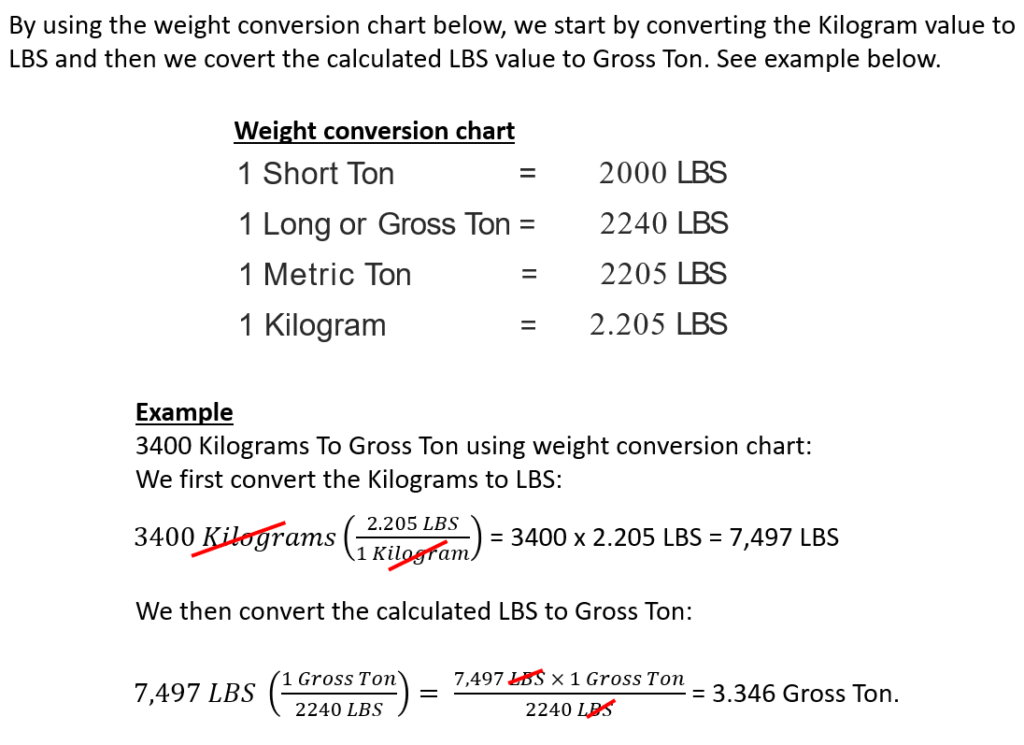Let’s look at this example for converting kilograms to gross-ton. In order to do this we will use the weight conversion-chart in the table below. From the chart we will look at the kilogram equivalent for pounds. We see that one kilogram is equivalent to two point two hundred and five pounds. The payload we are working with is 3400 kilograms, but our rigging equipment has weight ratings in gross-ton. In order to know if our rigging equipment can carry this weight, we will need to convert kilograms to gross-ton. The first step is to convert kilograms to pounds using our weight-conversion chart. Let’s multiply the 3400 kilograms by two point two hundred and five pounds. Now that we have converted the kilograms to pounds, we will need to convert the pounds to gross-ton. We do this by dividing the resulting value from our previous conversion by two thousand two hundred and forty pounds, which is the equivalent to 1 gross-ton. This division gives us a resulting value of three point three four six gross-ton. As we can see the number value in gross-ton is smaller than the number value in kilograms, even though these 2 values represent the same weight of our payload. Now that the weight of our payload is in the same units as our rigging rating units, we can choose the appropriate equipment to support the right weight. Now let’s move to the next topic so we can practice converting from gross-tons to metric-ton.

